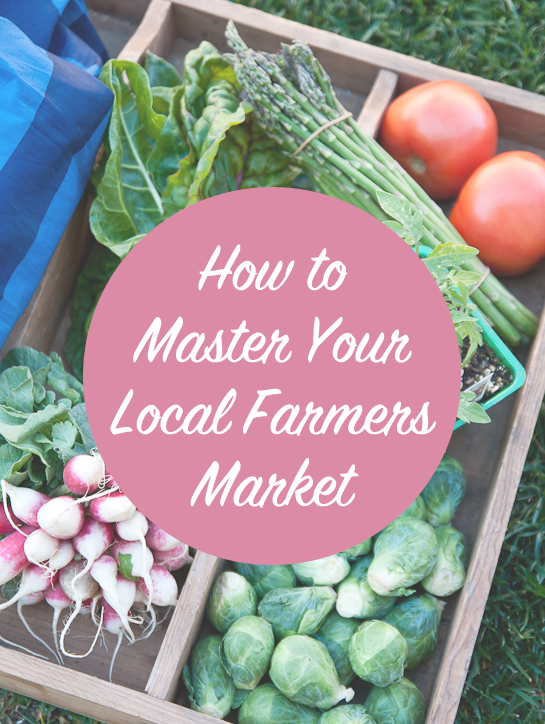My weekends aren’t complete without a stroll though the stalls of my local farmers market. It’s my favorite way to spend a leisurely Sunday morning—doing my food shopping for the week as I take in the sights, smells, and tastes around me. Not only are farmers markets the easiest way to support your local growers (which is the eco chic thing to do), they’re the best place to find ultra-fresh and flavorful produce.
But if you’re new to the farmers market scene, it can certainly be a bit overwhelming. Luckily, I consider myself a seasoned pro when it comes to buying local, seasonal fruits and veggies. So before you grab your reusable grocery bag and send yourself off into the sea of produce, here are a few tips and tricks to keep in mind…
1. Time your visit. Arriving early is the best way to avoid crowds and have your pick of the best selection of produce. The middle hours, however, are generally the most lively and best for people watching. Pickings will be slim near closing time, but that’s also when the best deals are to be found. Most farmers would rather sell their stock at a discounted price than have to haul it back home.
2. Know your seasons. Buying in season is tastier and cheaper. Epicurious has a handy dandy interactive map for finding out what’s in season where you live.
3. Be a bargain hunter. Not all stalls are created equal. I always do a quick survey of the entire market before making my purchases. This is the best way to ensure you’re getting the prettiest produce at the best price.
4. Multitask. In addition to tender greens, juicy peaches, and berries bursting with flavor, most farmers markets have stalls selling coffee, cheese, farm fresh eggs, freshly baked bread, flowers, and even local honey. If you plan things right, you might be able to skip your trip to the grocery store altogether.
5. Be adventurous. Never tried kohlrabi, squash blossoms, or fresh passion fruit before? Exotic fruits and vegetables are commonplace at farmers markets, so come prepared with an appetite (literally!) for adventure.
6. Ask questions. The growers are right there, so take advantage of it. Ask them where your food comes from and how it was grown. They might even have some tips on how to prepare it or some samples to hand out.
7. Understand organic. Many small farms that follow organic growing practices choose to skip USDA certification because of its high cost. So instead of stopping at “Is your farm organic?” (which refers to the official USDA label) follow up with more specific questions like, “Do you use pesticides?”
8. A little dirt won’t hurt. Organic produce won’t always look as pristine as it is in the supermarket, but don’t let that deter you. Just be sure to rinse your produce thoroughly before serving. I try to remind myself that a little dirt (and yes, even the occasional creepy crawly) is a lot less scary than the harmful chemicals used in conventional growing methods.
9. Join a CSA. Too busy to shop the farmers market? Joining a CSA, or Community Supported Agriculture program, is a quick and easy way to support your local growers. Think of it as a magazine subscription only with produce. You purchase a “share” from the farm at the beginning of the season, and then they set aside a box of produce for you weekly or monthly.
Are you ready to take on your local market?





